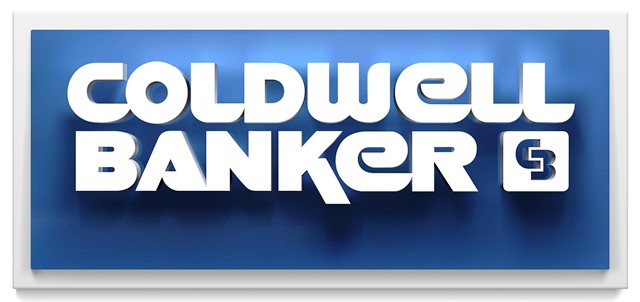Home Buying Finances
Things you want to know.
 |
STEP TWO: Home Buying Finances So, you've decided that home ownership is right for you. Now you need to determine if you are financially ready to buy a house. |
Figuring out your financial abilities is one of the most important steps in the home buying process.
In this Step, you will find a number of simple calculations that you can do to evaluate your current financial situation and the reality of your home buying finances. How much house you can afford and the maximum home price that you should be considering.
Once you understand these variables, you can make the best choice for you and even save money.
Test Yourself
To avoid any future surprises, you can do some financial exercises to see where you stand. Getting your home buying finances in order includes: calculating your net worth, your current monthly expenses and your current monthly debt payments.
Knowing your net worth is important because you will need this information when you discuss a mortgage with your lender. Your net worth is the amount left over once you've subtracted your total liabilities from your total assets. It will also give you a snapshot of your current home buying finances and show you how much you can afford to put as a down payment.home buying finances
Calculate your Net Worth
Next, use the tables below to determine your current expenses and debt payments. This will help you see what your actual monthly obligations are and what kind of mortgage payment you can comfortably fit into your budget.
Calculate your Current Household Budget
How Much Can You Afford?
Now that you have a clear picture of your home buying finances, it's time to find out what you can afford in monthly housing costs. Lenders follow two simple affordability rules to determine how much you can pay.home buying finances
The first affordability rule is that your monthly housing costs shouldn't be more than 32% of your gross household monthly income. Housing costs include monthly mortgage principal and interest, taxes and heating expenses known as P.I.T.H. for short. If applicable, this sum also includes half of monthly condominium fees and the entire annual site lease (in the case of leasehold tenure).
In the process of looking at your home buying finances, lenders add up these housing costs to determine what percentage they are of your gross monthly income. This figure is known as your Gross Debt Service (GDS) ratio. Remember, it must be 32% or less.home buying finances
Case in point:
Jane's gross monthly income is $2,500 and Deepak's is $2,000 for a total of $4,500 per month. They should pay no more than $1,440 ($4,500 x 32%) for their monthly housing expenses (P.I.T.H.).
The second affordability rule is that your entire monthly debt load shouldn't be more than 40% of your gross monthly income. This includes housing costs and other debts, such as car loans and credit card payments. Lenders add up these debts to determine what percentage they are of your gross household monthly income. This figure is your Total Debt Service (TDS) ratio.home buying finances
Use the table below to calculate your TDS ratio and to determine the monthly housing costs you can afford after making other monthly debt payments
Calculate your GDS ratio.
Calculate your TDS ratio.
Jane and Deepak have a gross monthly income of $4,500. Their total debt load should not exceed $1,800 ($4,500 x 40%). They have a monthly car payment of $400, a student loan of $200 and credit card payments for a total of $750 in non-housing debt payments each month. That means, they would have no more than $1,050 ($1,800 $750) available for monthly housing payments.
Your Maximum Home Pricehome buying finances
The maximum home price that you can afford depends on a number of factors but the most important are your gross household income, your down payment and the mortgage interest rate.
This table gives you an idea of the maximum home price you can afford.home buying finances
Income, Home Price and Down Payment Guide
| $ 25,000 | $3,000 | $60,000 | $6,300 | $63,000 | $18,900 | $75,600 |
| $30,000 | $3,900 | $78,000 | $8,200 | $$82,000 | $24,700 | $98,800 |
| $35,000 | $4,800 | $96,000 | $10,100 | $101,000 | $30,300 | $121,200 |
| $40,000 | $5,700 | $114,000 | $12,000 | $120,000 | $36,000 | $144,000 |
| $45,000 | $6,600 | $132,000 | $13,900 | $139,000 | $41,700 | $166,800 |
| $50,000 | $7,500 | $150,000 | $15,800 | $158,000 | $47,400 | $189,600 |
| $60,000 | $9,300 | $186,000 | $19,600 | $196,000 | $58,800 | $235,200 |
| 70,000 | $11,050 | $221,000 | $23,400 | $234,000 | $70,100 | $280,400 |
| $80,000 | $12,500 | $250,000 | $27,200 | $272,000 | $81,500 | $326,000 |
| $90,000 | $14,400 | $288,000 | $31,000 | $310,000 | $92,800 | $371,200 |
| $100,000 | $16,275 | $325,500 | $34,800 | $348,000 | $104,300 | $417,200 |
This table assumes a mortgage interest rate of 8%, average tax and heating costs in Canada, and the mortgage an average Canadian would qualify for based on a 32% debt service ratio.
For most people the hardest part of buying a home, especially the first one, is saving the necessary down payment. Many people will not have 20% of the purchase price to put down. With mortgage loan insurance, you can put as little as 5% down. Mortgage loan insurance protects the lender and, by law, most Canadian lending institutions require it. The way it works is if the borrower defaults (fails to pay) on the mortgage, the lender is paid back by the insurer. The cost for this type of insurance is in the form of a premium and can be paid in a single lump sum or it can be added to your mortgage and included in your monthly payments.
CMHC is a major provider of this type of insurance in Canada and its current loan premiums are as follows:
OF LOAN AMOUNT |
|
| Up to and including 65% | 0.50 |
| Up to and including 75% | 0.65 |
| Up to and including 80% | 1.00 |
| Up to and including 85% | 1.75 |
| Up to and including 90% | 2.00 |
| Between 90.01 and 95% Traditional Downpayment 2.75 Flex Down |
2.75 2.90 |
| Secured Line of Credit Surcharge Non-amortized repayment option: 5 years 10 years |
0.25 3.40 |
Don't forget that the minimum 5% down payment must come from your own resources. However, if you have a good credit history and an income to support the financial obligations of homeownership, you could benefit from CMHC's Flex Down product. The Flex Down product allows home buyers to obtain the minimum 5% down payment from virtually any source, including lender incentives and borrowed funds, provided that the source is arm's length to the purchase or sale of the property.
Other important factors to consider when determining your maximum home price are your personal preferences and your calculations from earlier on in this chapter.
Get a Mortgage Pre-Approval
Once you've made the necessary calculations and feel that you are ready to obtain a mortgage, it's a good idea to select a lender to get pre-approved. This means that the lender will look at your finances to establish the amount of mortgage you can afford. At that time, the lender will give you a written confirmation or certificate for a fixed interest rate good for a specific period of time.
Some buyers may not wish to pursue a mortgage pre-approval until they have found the home they want to buy. However, the idea of having a pre-approved mortgage amount makes the search for your new home much easier and less time-consuming because you have a good price range in mind.
Some of the things you will need to have with you the first time you meet with a lender are:
Your personal information, including identification such as your driver's license
Details on your job, including confirmation of salary in the form of a letter from your employer
Your sources of income
Information and details on all bank accounts, loans and other debts
Proof of financial assets
Source and amount of down payment and deposit
Proof of source of funds for the closing costs (these are usually between 1.5% and 4% of the purchase price)
Will You Have Trouble Qualifying for a Mortgage?
Your calculations may show that you will have trouble meeting monthly debt payment and that you will likely have trouble getting approved for a mortgage. Here are some things you can do:
Pay off some loans first
Save for a larger down payment
Revise your target house price
Other Helpful Strategies
Meet with a credit counselor who can help you minimize your debts.
Buy your home through a rent-to-own program provided by the builder, a non-profit sponsor or a government sponsor.
Find out about programs through which you can help build your own home.
Ask the housing department of your municipality about any special programs available.
The Importance of Your Credit Rating
Before approving you for a mortgage, lenders will want to see how well you have paid your debts and bills in the past. To do this, they simply get a copy of your credit history (credit report) from a credit bureau. This provides them with information on your financial past and use of credit. Before your lender sees your credit history, you should get a copy for yourself to make sure the information is complete and accurate. Simply contact one of the two main credit-reporting agencies (Equifax Canada Inc. or TransUnion of Canada) to get a copy of your credit report. There is often a fee for this service.
Lack of Credit History If you have no credit history, it is important to start building one by, for example, applying for a standard credit card with good interest rates and terms, making small purchases and paying them as soon as the bill comes in.
Fixing a Credit Record
If you have bad credit, lenders might not want to give you a mortgage loan until you can re-establish a good credit history by making debt payments regularly and on time. Most unfavorable credit information, including bankruptcy, is dropped from your credit file after seven years. If you have bad credit, you may want to consider credit counsellings. Despite your poor credit history, you might still be able to get a mortgage loan if you have a relative such as a family member willing to be a guarantor or co-signer on the loan. This person must meet the lender's borrowing criteria, including good credit history, and is legally obligated to make the mortgage payments if you do not.
Modified Article from CMHC Canada
Step three in the process of buying a home.
10 Steps
Buyers Main Page
Return to top of Home Buying Finances page.
Your first paragraph ...
I'm Always Here to Help
If you have questions about up-to-date market conditions, would like to get my Price Analysis, or simply would like to know what that home next door is listed for... I'm always available to provide that information.
Perhaps you are considering a sale, but are just not sure what would be the best way to proceed in this changing market.
Or maybe you are the First Time Buyer, excited to enter the Housing Market, and have more questions than your would like to handle on your own...
Please give me a call at 705-241-4249
Return to Home page.








